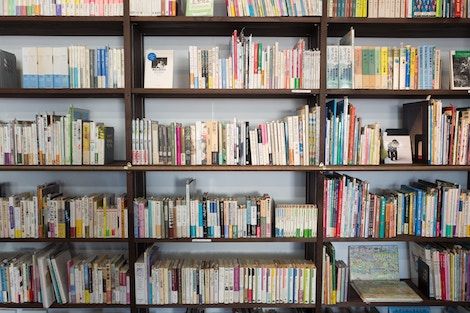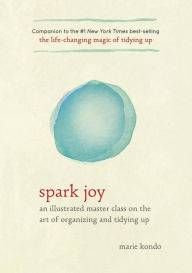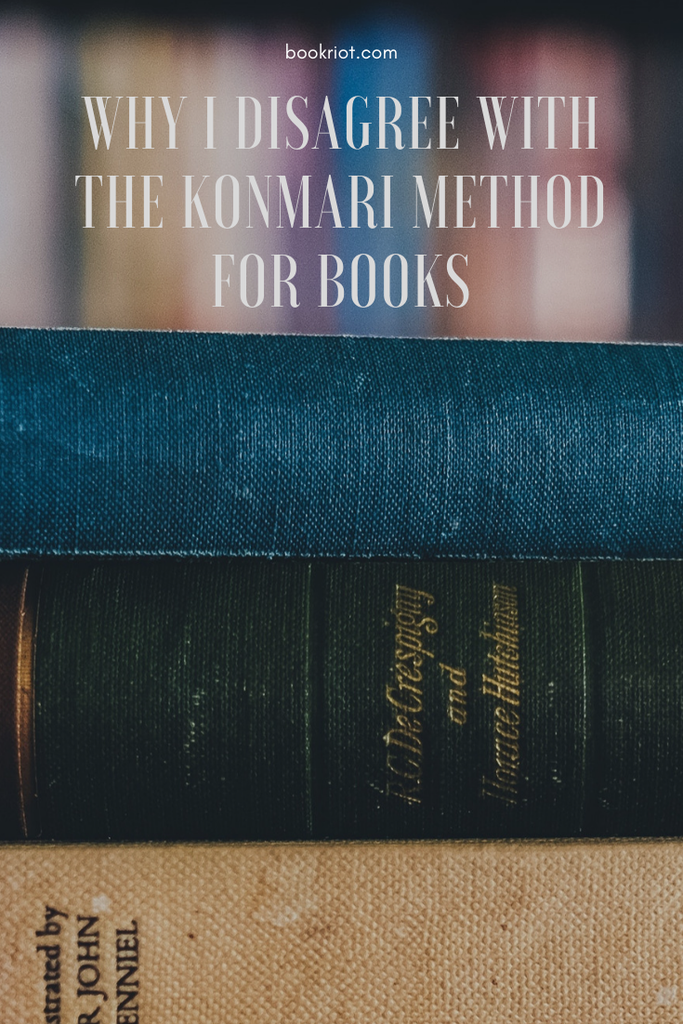
Why I Disagree With The Konmari Tidying-Up Method For Books
New year, new resolutions, new approach to life! Now might seem like the perfect time for some life-changing magic, and perhaps the time to begin with some tidying up. Maybe even using the Konmari method that everyone seems to be talking about lately.
Marie Kondo’s ‘Konmari’ approach to tidying up has taken the world by storm, with the book The Life-Changing Magic of Tidying Up published in English in 2014 (it was originally published in Japanese in 2011). A sequel, Spark Joy, was published in 2016, a graphic novel version, The Life-Changing Manga of Tidying Up, released in 2017, and a new series on Netflix, Tidying Up with Marie Kondo, began airing in 2019. The main premise of her approach is to discard everything that does not spark joy and you will eventually surround yourself with only things that you love.

What is it about books that I disagree with? Kondo suggests that the books that you keep to be read eventually will actually never be read, and that the moment you first encounter a book is the moment to read it. If you don’t read it then, you are not going to, so it can be discarded.
She also argues that you are going to reread very few of the books, and you don’t need to keep the physical object after you’ve read it once; the experience of reading the book will stay with you even if you don’t remember everything in the book. You have experienced reading it, the book is a part of you, the physical object has fulfilled its purpose and therefore can be discarded.
The criterion for whether or not to keep a book using the Konmari method is whether or not you experience a thrill of pleasure when you touch it — whether the book sparks joy. By using this criterion for books, you end up with a bookshelf of books that you really love which, for a book lover, should be a source of great happiness. No longer will there be books you intended to read once but never did, making you feel guilty whenever you look at them, thinking you really ought to get around to it one day instead of buying or borrowing yet another book. There will be no more old textbooks or educational books that you think might be useful to keep just in case, but are really only taking up valuable shelf place. No more books given to you as presents that you feel bad about getting rid of because they were gifts. Only books you love. It’s a beautiful idea.
But for me, there are two parts of this that do not work. Her premise that if you don’t read a book when you first encounter it then it has lost its moment and you will never read it is wrong for me. And you know what book most clearly exemplifies this? The Life-Changing Magic of Tidying Up. Yes, the very book about this approach. I find that quite amusing, actually. I bought the book in mid-2016. I had just moved to America, and my husband and I were trying to fit everything I had brought with me into his already-established apartment, and I thought the book might help. I read a chapter, then closed the book and didn’t finish it. You might think that the book lost its moment.
I did read the book, however. I read it on the last day of 2018, about a year and a half after first acquiring the book and after it had been sitting virtually untouched on my bookshelf for all that time. I gave the book a second go not because I was inspired to tidy up or change my life, but because as of 30 December 2018, I had read 98 books and wondered if there were two books I could read on the last day of the year to get the tally to 100. This was a relatively short book that I thought I could read in a day, so I read it. And indeed, it became the last book I read of 2018, bringing my 2018 ‘books read’ total to 99. I’ve since then read the graphic novel version and borrowed Spark Joy from the library and that is now on my ‘to be read’ pile. I think I’ll even tidy up. I don’t think I’ll be weeding the books that I haven’t read yet because I genuinely will read them eventually, one day. Probably not every single one of them, but there are enough of my shelf right now that I know I will be reading in the coming months.
The second part of her approach to books that doesn’t work for me is her argument that you will not reread. Because I do reread. Maybe not often, and maybe not every single book I own will be reread (and those are ones that I *would* be willing to part with), but I reread enough of my books that this criterion doesn’t work. Sometimes I get on a crime fiction kick and want to revisit the world of Lincoln Rhyme and Manhattan and using forensics to solve crimes, so I dive back into my Jeffery Deaver collection. Sometimes I want to go back to the comforting fictional world of Longhampton, so Lucy Dillon’s books end up on the bedside table. And sometimes I want a true comfort read, so out comes the Baby-Sitters Club.

I don’t have anything against weeding or discarding books. Books that I have read and loved once but no longer love, or have no desire to read again, or know are popular enough that they are still in print or will be easily accessible from the library, I am happy to give away. I have no problem with books being turned into art or other projects. It’s not discarding books that is the problem for me when it comes to the Konmari method. It’s simply that I know that ‘one day’ will come for some of the books, and that rereading will happen. My bookshelves and their contents spark joy when I look at them, and that’s enough for me.


















